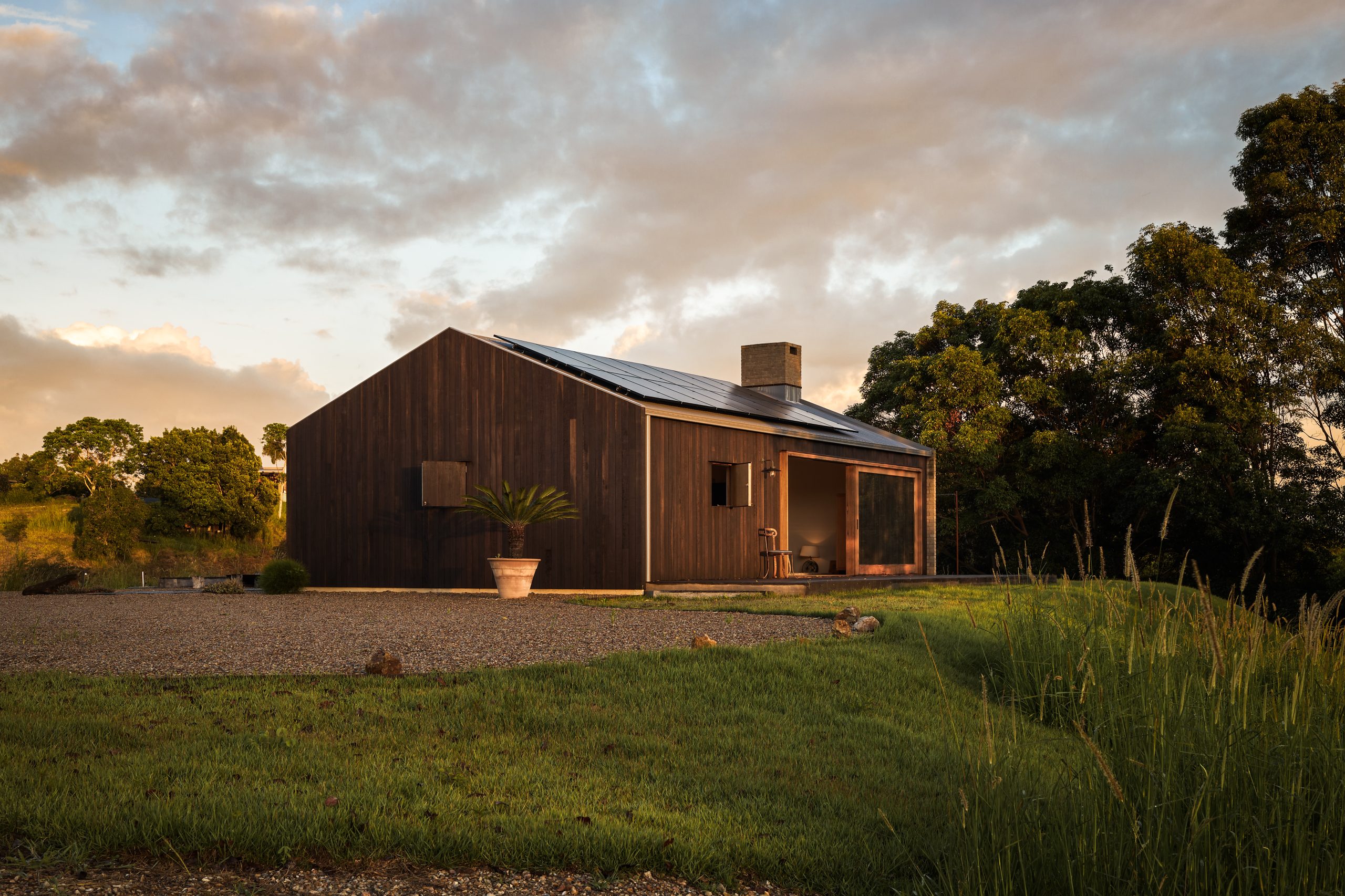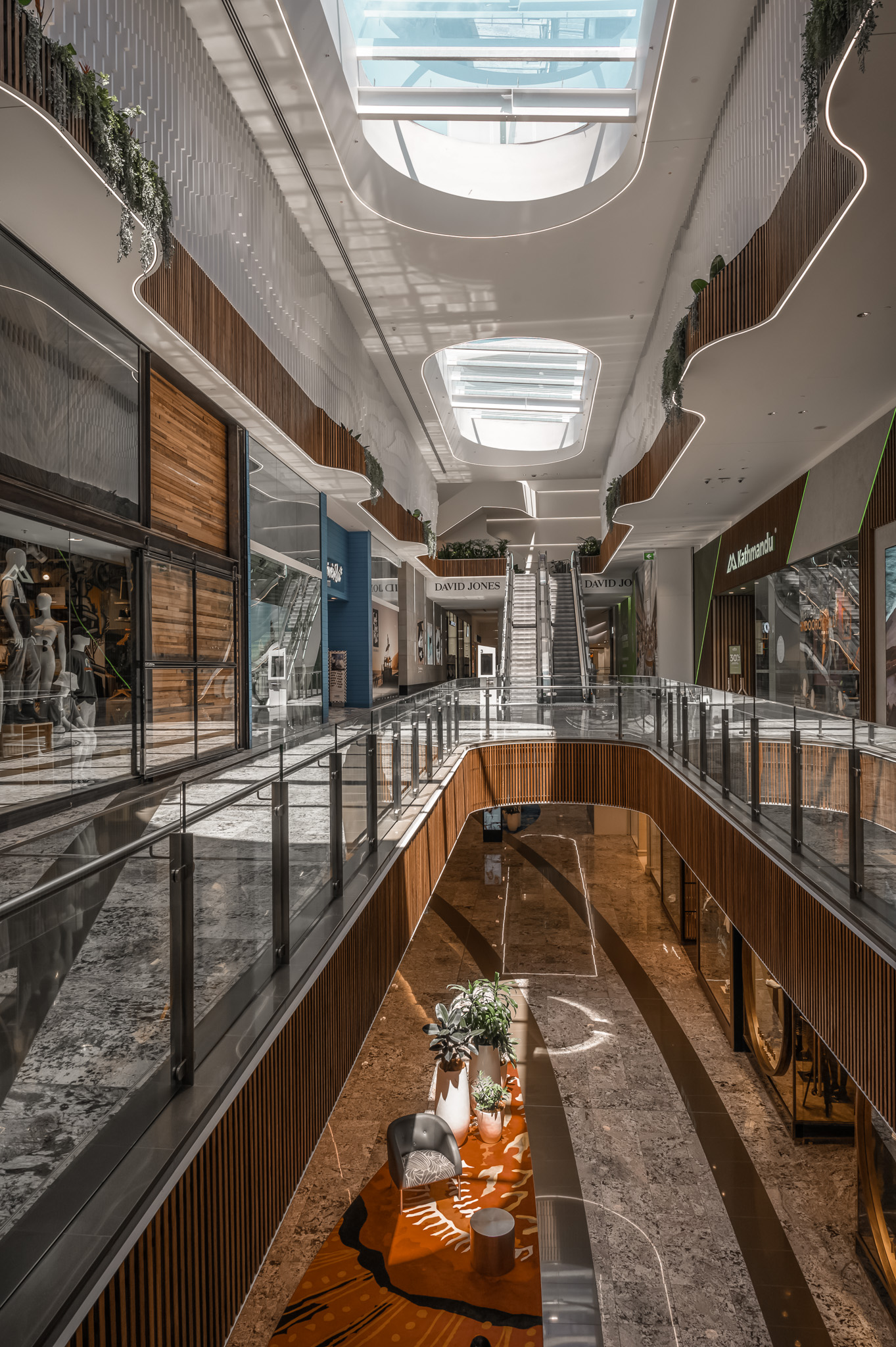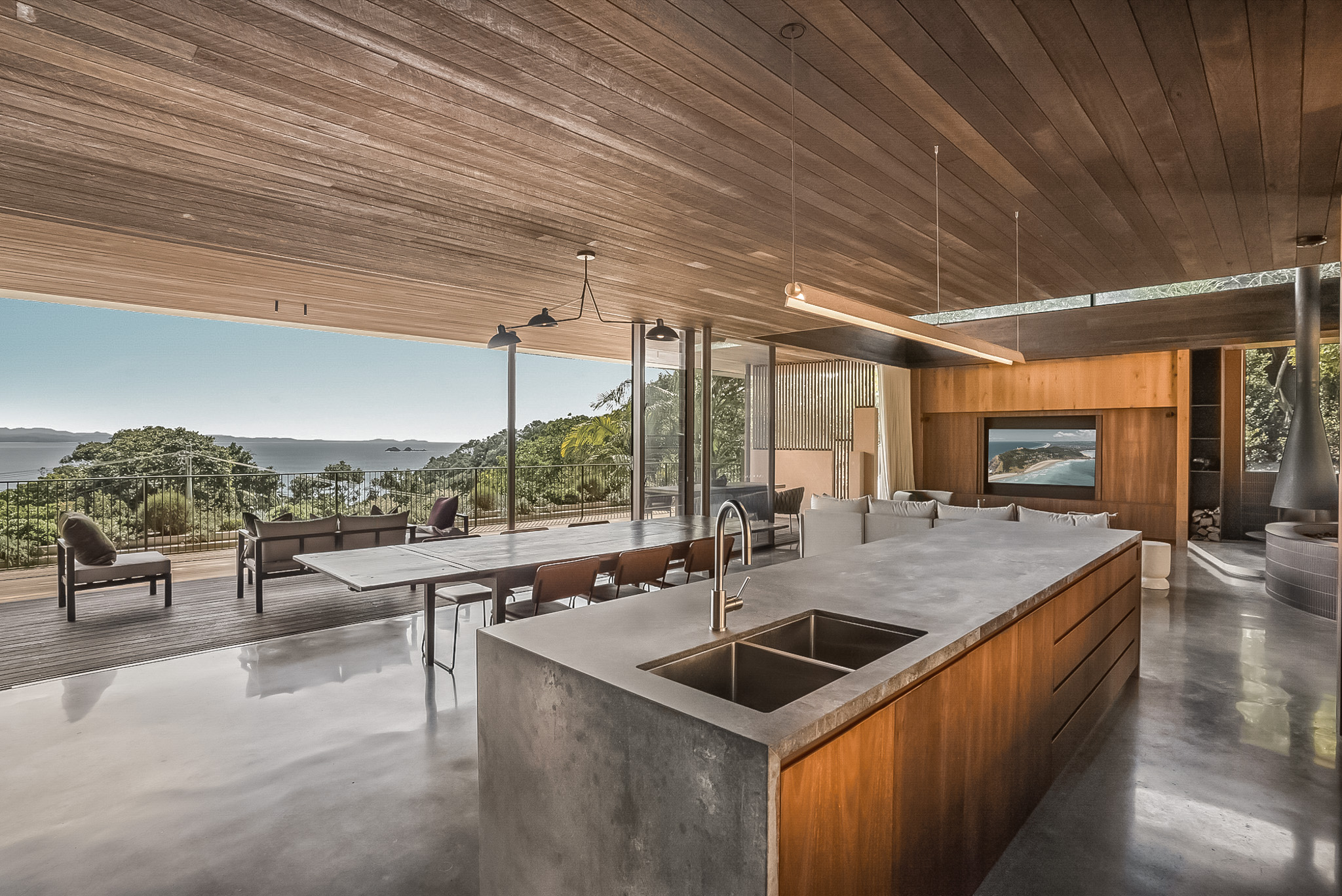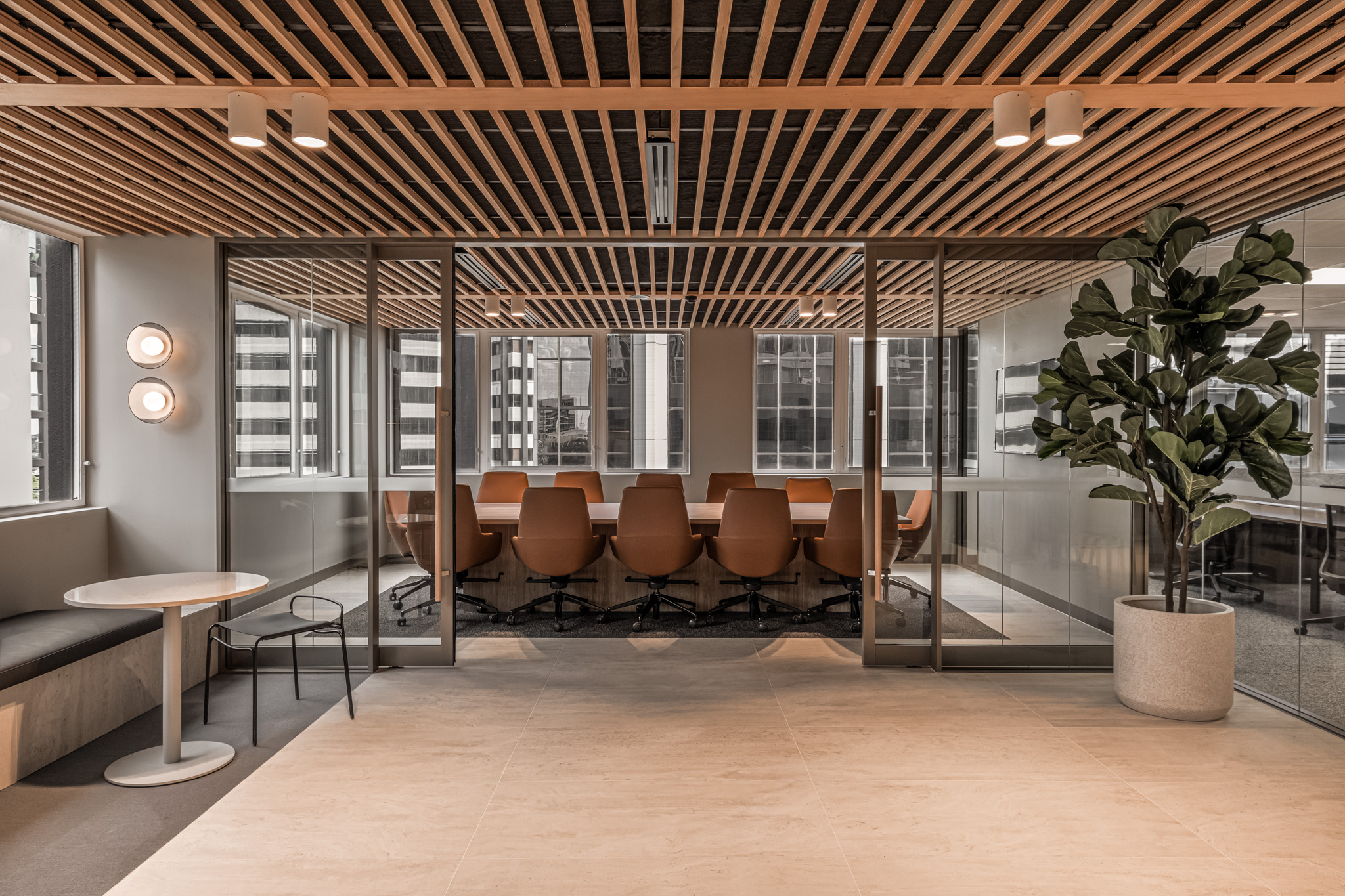
Why Use Spotted Gum External & Internal Timber Cladding
What is Spotted Gum?
Spotted gum is a type of hardwood tree native to Australia, belonging to the Corymbia and Eucalyptus genera. It is renowned for its distinctive spotted appearance on its trunk, caused by patches of dark, rough bark that contrasts with the lighter, smooth bark underneath.
Spotted gum timber is highly valued for its durability, strength, and attractive grain patterns, making it popular for various construction purposes such as solid timber flooring, decking, cladding, and furniture. Additionally, spotted gum is appreciated for its aesthetic qualities, with its range of colors from pale gray-brown to rich reddish-brown adding warmth and character to any environment.
Click here, to view Modinex’s complete Spotted Gum product range.

The benefits of Spotted Gum claddings & linings?
Spotted gum timber cladding offers several benefits, making it a popular choice for both residential and commercial construction projects for external & internal timber claddings:
– Durability: Spotted Gum is renowned for its natural durability, with high resistance to decay, rot, and insect attack. This makes it well-suited for exterior cladding where it is exposed to the elements.
– Strength: Spotted Gum timber is known for its strength, making it capable of withstanding harsh weather conditions, including strong winds and storms. This strength also contributes to its longevity, reducing the need for frequent maintenance or replacement.
– Attractive Appearance: Spotted Gum timber has a distinctive grain pattern and color variation, ranging from pale gray-brown to rich reddish-brown. This natural variation adds visual interest and warmth to the exterior of buildings, enhancing their aesthetic appeal.
– Versatility: Spotted Gum timber cladding can be used in various architectural styles, from traditional to contemporary designs. It can be installed horizontally, vertically, or diagonally, allowing for creative and customized finishes.
– Sustainability: Spotted Gum timber is sourced from sustainably managed forests in Australia, where strict harvesting regulations ensure responsible forestry practices. Using timber from certified sources can contribute to green building certifications and environmental sustainability goals.
– Insulation Properties: Timber cladding provides natural insulation, helping to regulate indoor temperatures and improve energy efficiency. This can lead to reduced heating and cooling costs over time.
– Low Maintenance: While periodic maintenance may be required to preserve its appearance, Spotted Gum timber cladding generally requires minimal upkeep compared to other cladding materials. Regular cleaning and occasional resealing or recoating can help maintain its beauty and performance.
– Fire Resistance: Spotted Gum timber possesses natural fire-resistant properties, making it suitable for use in bushfire-prone areas when properly treated and installed according to local building codes and regulations. Spotted Gum achieved a BAL29 and Group 3 fire rating. If Fireshield coating is applied to the surface of Spotted Gum, a Group 1 fire rating can be achieved.
Overall, spotted gum timber cladding offers a combination of durability, aesthetics, sustainability, and versatility, making it an excellent choice for enhancing the exterior of buildings while providing long-term value and performance. Click here to view more technical data on Spotted Gum.

Where is Spotted Gum harvested?
Spotted Gum is primarily harvested from forests in Australia, as it is native to that region. It is found along the eastern coast of Australia, particularly in the states of Queensland, New South Wales, and Victoria. These areas are known for their rich biodiversity and extensive eucalypt forests where spotted gum trees thrive.
Within these regions, Spotted Gum trees are harvested from sustainably managed forests and plantations. Sustainable forestry practices are employed to ensure the long-term health and viability of the forests, including selective harvesting and reforestation efforts.
Additionally, Spotted Gum timber may also be sourced from certified plantations outside of Australia, although the majority of commercially available spotted gum is harvested domestically. These plantations may be established in regions with similar climates and soil conditions conducive to the growth of spotted gum trees. However, Australian spotted gum is typically considered the highest quality due to its natural properties and the strict regulations governing its harvesting and production.

How do I maintain Spotted Gum cladding?
Maintaining Spotted Gum external cladding is relatively straightforward and can help preserve its appearance and durability over time. Here are some maintenance tips:
– Regular Cleaning: Periodically clean the cladding surface with a soft brush or cloth to remove dirt, dust, and debris. You can also use a mild detergent solution and water to gently scrub the surface if needed. Rinse thoroughly with clean water afterward.
– Inspect for Damage: Regularly inspect the cladding for any signs of damage, such as cracks, splits, or loose boards. Address any issues promptly to prevent further deterioration.
– Refinishing: Depending on the finish applied to the spotted gum cladding, you may need to periodically reapply a protective coating to maintain its appearance and weather resistance. Follow the manufacturer’s recommendations for the specific finish used. This may involve sanding the surface lightly before applying a new coat of finish.
– Sealing Joints: Check the joints between the cladding boards for any gaps or signs of deterioration. Use an appropriate sealant to fill in any gaps and prevent water infiltration, which can lead to rot or other damage.
– Avoiding Moisture: Minimize prolonged exposure to moisture by ensuring proper drainage around the cladding and avoiding direct contact with water sources, such as sprinklers or hoses. Trim back vegetation that may come into contact with the cladding and retain moisture.
– Preventing Pest Infestation: Keep the area around the cladding free from debris and vegetation to discourage pests such as termites. Consider applying a suitable insecticide or repellent as a preventative measure.
– Protect from Sun Damage: Spotted Gum cladding may naturally gray or fade over time when exposed to sunlight. Applying a UV-resistant finish can help minimize sun damage and preserve the natural color of the wood.
– Regular Maintenance Schedule: Establish a regular maintenance schedule for inspecting, cleaning, and refinishing the spotted gum cladding as needed. This will help ensure that any issues are addressed promptly and the cladding remains in optimal condition.
By following these maintenance tips, you can help extend the lifespan of your spotted gum cladding and keep it looking beautiful for years to come.

Is Spotted Gum cladding sustainable?
Determining the sustainability of Spotted Gum external and internal cladding involves considering several factors related to its production, sourcing, and environmental impact:
– Sustainable Forestry Practices: Spotted gum timber can be harvested from sustainably managed forests and plantations where responsible forestry practices are employed. This includes selective harvesting, reforestation efforts, and adherence to certification standards such as those provided by the Forest Stewardship Council (FSC) or the Programme for the Endorsement of Forest Certification (PEFC).
– Carbon Footprint: Timber is generally considered a more environmentally friendly building material compared to alternatives like concrete or steel due to its lower carbon footprint. Spotted gum trees absorb carbon dioxide from the atmosphere as they grow, and timber products store this carbon throughout their lifespan.
– Local Sourcing: Sourcing spotted gum timber locally can reduce transportation emissions associated with long-distance shipping. Using timber from nearby forests or plantations also supports local economies and reduces reliance on imported materials.
– Certifications: Look for spotted gum cladding products that carry certifications indicating sustainable sourcing and production practices. These certifications provide assurance that the timber has been harvested legally and in an environmentally responsible manner.
– End-of-Life Considerations: At the end of its lifespan, timber can be recycled or repurposed, contributing to a circular economy and reducing waste. Additionally, timber cladding can be biodegradable, minimizing its environmental impact when disposed of properly.
– Environmental Impact: While timber production can have environmental impacts, such as habitat disruption or soil erosion if not managed properly, sustainable forestry practices aim to mitigate these effects and maintain the long-term health of forest ecosystems.
Overall, Spotted Gum cladding can be sustainable when sourced from responsibly managed forests or plantations and produced using environmentally friendly practices. However, it’s essential to consider the specific sourcing and production methods of the cladding product in question to assess its sustainability accurately. Look for certifications and seek information from suppliers to make informed decisions about the sustainability of spotted gum cladding for your project.